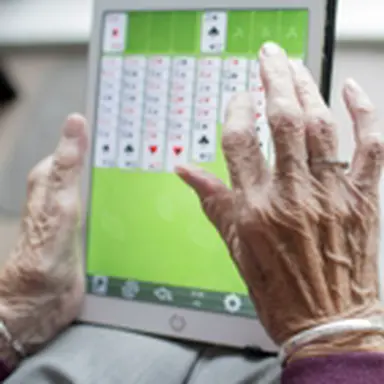
There is no doubt that for many of us, getting older without the visible signs of skin aging is the ultimate dream. If the cosmetics industry proves doubly ingenious to offer face care products, the other body parts are often overlooked, in particular the back of the hands, although they are the victims of the appearance of dark spots.
As a new device is about to be launched to come to terms with these hand spots, Professor Humbert, President of ISCP (International Society of Cutaneous Pharmacology) and ISES (International Society for Biophysics and Imaging of the Skin), explained how this skin problem is triggered.
In the scientific jargon, the dark spots that appear on the back of the hands are called solar lentigo, due to their lentil-looking shape.
Heliodermal aging, i.e. the natural skin alteration due to the chronic exposure to sun rays, is responsible for the appearance of these spots. Since our hands are almost permanently in contact with the outside – and with natural light – our melanocytes get damaged without us being aware of it.
Lentigo can appear in certain individuals as soon as they turn 30, although the phenomenon tends to emerge with age. Of course, we are not all equal when it comes to this skin degeneration: it all depends on your skin phototype.
It is estimated that as from 50, three to five new spots appear every year.
Lentigo formation
Equipped with a section of the different skin layers, Professor Humbert explained that the cells responsible for sun tan are melanocytes. They have little dendrites – similarly to octopuses – they can use to move between the different skin cells in order to distribute the melanin they create. This distribution is usually evenly carried out.
However, ‘several research teams managed to show what actually occurs in dendrites.
There are microtubules (fibres found in certain cells) that dysfunction and prevent or accumulate melanin in these dendrites without being able to homogeneously transfer it to the epidermis. That is how the disease appears,’ Professor Humbert exposed.
So, lentigo is actually an accumulation of melanin on certain skin areas.
Professor Humbert added that the appearance of lentigo is not a handicap and does not represent any risk for health. Still, ‘although some people manage to live with it without any problem, dark spots may be stigmatizing for others,’ he pointed out.
What solutions?
There are several methods already available to soften the aspect of pigment spots.
There are also brightening cosmetics creams on the market. It is important to keep in mind that these skincare products act on the intensity of the lentigo colour, but they cannot treat the problem in depth.
Laser
The idea is to destroy the melanocyte responsible for the melanin accumulation by selective photothermolysis.
This method provides good results, but there are still a few parameters to take into account: the skin should not be tanned, there should be intervals of at least four weeks between two sessions, and the skin should not be exposed to the sun between two visits to the dermatologist’s. Lastly, one laser session costs between 80 and 100 euros.
Peeling
This process consists in desquamating the skin surface to remove imperfections.
This treatment requires chemicals. It can make the spot almost invisible, but the peeling only treats lentigo superficially. The dysfunctional melanocyte is not affected.
Cryotherapy
This method helps make dark spots disappear with locally-applied liquid nitrogen at 180° C.
Several sessions are required to really get rid of lentigo. The results are convincing, but again, there are risks. ‘It is a painful treatment that can leave the skin red or burn it if the nitrogen remains in contact with the skin a little too long,’ explained Professor Humbert.
Dark spots are a natural consequence of our lifestyles. Although they are not harmful for health, they are unsightly. Right now, the existing solutions are costly, painful, or inefficient in depth.
However, recent research conducted by the Cryobeauty Pharma laboratory showed that melanocytes react to the temperature range between -5 and -15° C and highlight the principle of cyto-selective cryotherapy.
A treatment device for private individuals was developed following this research. Easy-to-use, it targets the dysfunctional cell at the appropriate temperature without any pain. It is to be launched in March 2018.
JS













